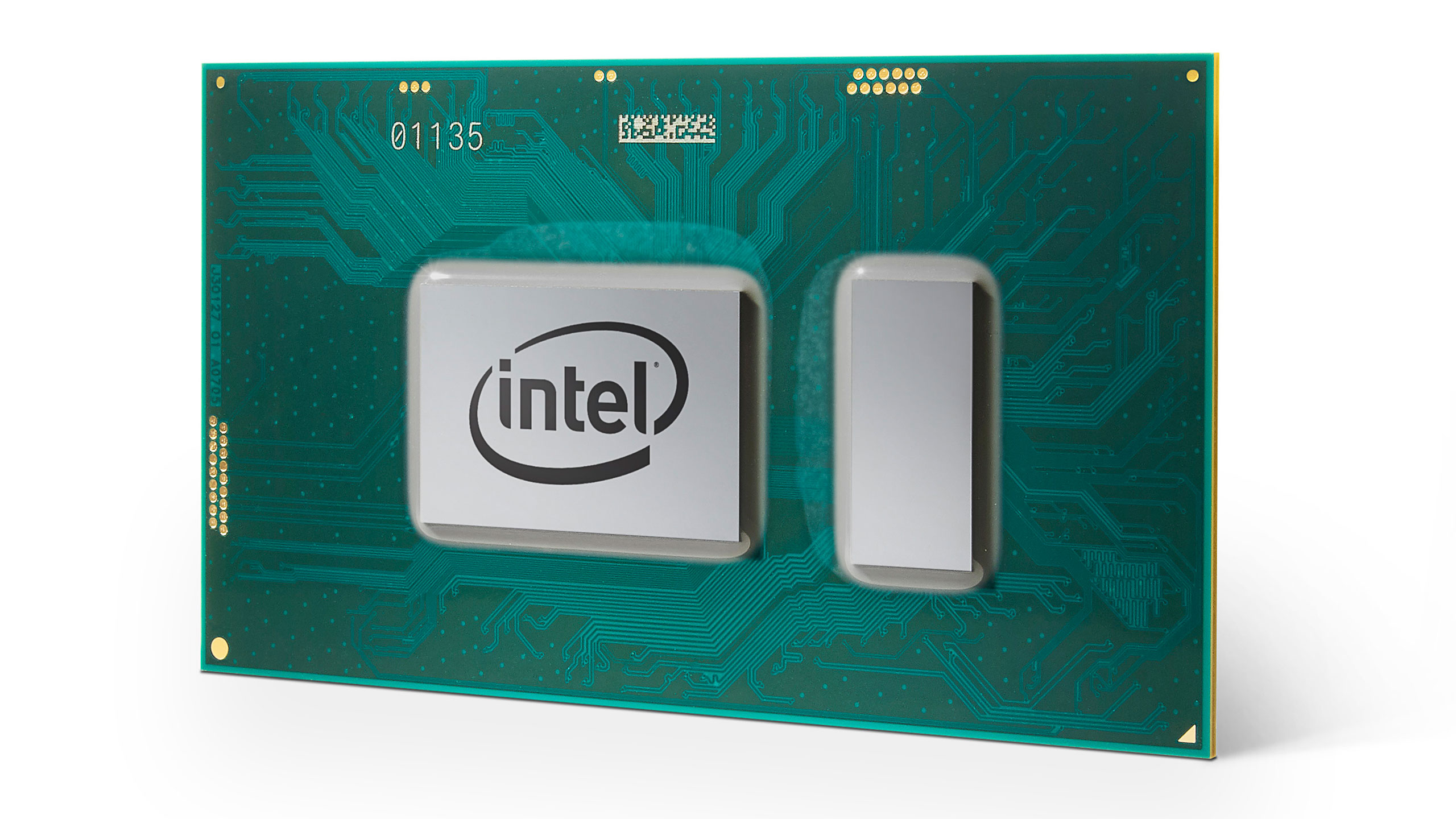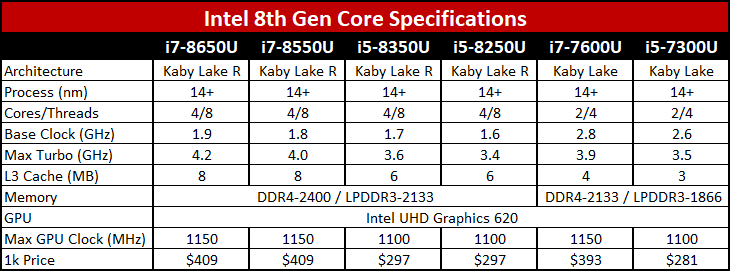Intel launches new 8th Gen Core processors for mobile
Desktops in the fall, followed by enthusiast, workstation, and server parts later.

Today, Intel is launching its latest revision of its Core microprocessor line. Don't let the name fool you, however, as the first 8th Gen Core processors use a refined variant of the existing Kaby Lake architecture, called Kaby Lake R. The initial parts are also for what is perhaps the least exciting market, at least insofar as PC gamers are concerned: the first processors are for 15W 2-in-1 devices and ultrathin laptops. Intel makes some big claims in terms of performance improvements relative to 7th Gen Core, which comes thanks mostly to the 15W TDP.
The initial launch of 8th Gen Core is similar to Intel's Broadwell rollout a couple of years ago, with a limited number of SKUs for the ultraportable market. There will be four initial parts, two Core i7 and two Core i5, and while the architecture may be the same base Kaby Lake design, Intel is doing something new. These will be the first 15W quad-core Core processors Intel has ever created, with the full feature set of Hyper-Threading, AVX 2.0 instructions, Quick Sync, and more. Here's the high level overview.

Intel says the fastest parts provide on average 40 percent more performance in system tests compared to 7th Gen parts. This comes primarily via the doubling of core/thread counts, along with higher Turbo Boost clockspeeds. The previous generation i7-7660U has a base clockspeed of 2.5GHz and a Turbo clock of 4.0GHz, while the new i7-8650U has a 1.9GHz base clock and 4.2GHz max Turbo frequency. The drop in base clock isn't surprising, since there are now four cores/eight threads instead of the 2/4 core/thread arrangement of the previous generation. Since the base clock is what Intel guarantees the processors will maintain, 1.9GHz on eight threads in 15W is pretty reasonable. Lighter workloads meanwhile will hit the higher Turbo speeds.
Intel also compares its new 8th Gen processors to the typical 5-year-old PCs that are in common use, noting that a modern 8th Gen laptop can be more than twice as fast. One example is editing video, where Quick Sync and other features enable the new parts to be up to 14.7 times faster—instead of 45 minutes to create a 4K HEVC video using PowerDirector on a Core i5-3317U 15W laptop, the same task can be completed in 3 minutes using a Core i5-8250U laptop. The reason for the dramatic improvement is that the newer Intel CPUs accelerate 4K HEVC encoding, if that's something you do.
The first wave of 8the Gen Core devices will show up beginning in September, with a wide variety of designs from Intel's partners. But more importantly, Intel says that desktop 8th Gen products will show up in the fall, followed by processors for enthusiasts, workstations, and servers. Where the 15W parts launching today use Kaby Lake, the future parts will include the first Coffee Lake desktop parts (up to six cores on LGA1151, though it will apparently require a new chipset/motherboard), and later 8th Gen products will include Intel's first 10nm products (Cannonlake). Intel provided some additional details on 8th Gen Core on Facebook, including a new VR experience.
The biggest gaming news, reviews and hardware deals
Keep up to date with the most important stories and the best deals, as picked by the PC Gamer team.
Jarred's love of computers dates back to the dark ages when his dad brought home a DOS 2.3 PC and he left his C-64 behind. He eventually built his first custom PC in 1990 with a 286 12MHz, only to discover it was already woefully outdated when Wing Commander was released a few months later. He holds a BS in Computer Science from Brigham Young University and has been working as a tech journalist since 2004, writing for AnandTech, Maximum PC, and PC Gamer. From the first S3 Virge '3D decelerators' to today's GPUs, Jarred keeps up with all the latest graphics trends and is the one to ask about game performance.


